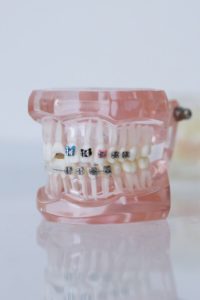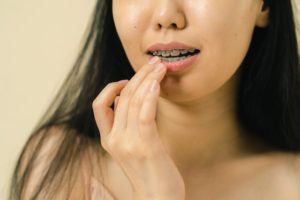 Over the past few years, illegal dentistry by unqualified individuals has become rampant in Malaysia. Historically, complaints about illegal dental services often related to dental extractions or dentures. In recent years, however, illegal dental services have expanded towards aesthetic treatments such as tooth whitening, “fake braces”, “fake veneers” as well as therapeutic treatments like scaling and fillings. These providers have also started offering illegal dental training for those who wish to become “instant dentists”. These training sessions typically last for only a few hours and participants are provided with a self-claimed training centre certificate. To further diversify their services, many also act as suppliers of dental products for future providers, often supplying starter kits consisting of basic equipment and material at discounted prices. Agents are also recruited (dropship) for customer recruitment.
Over the past few years, illegal dentistry by unqualified individuals has become rampant in Malaysia. Historically, complaints about illegal dental services often related to dental extractions or dentures. In recent years, however, illegal dental services have expanded towards aesthetic treatments such as tooth whitening, “fake braces”, “fake veneers” as well as therapeutic treatments like scaling and fillings. These providers have also started offering illegal dental training for those who wish to become “instant dentists”. These training sessions typically last for only a few hours and participants are provided with a self-claimed training centre certificate. To further diversify their services, many also act as suppliers of dental products for future providers, often supplying starter kits consisting of basic equipment and material at discounted prices. Agents are also recruited (dropship) for customer recruitment.
The use of social media (e.g. Facebook, Instagram and TikTok) has become a major platform for them to gain customers, to spread information, and to provide an open access to market their services and training. They openly promote their services online through a number of hashtags such as #bracesmurah, #pasangbraces, #veneermurah etc. They advertise their service using similar concepts of selling other beauty products (such as offering attractive packages, discounts, promotions in conjunction with special events, buy one free one schemes, prebooking systems etc).
 A study on Instagram content found that these providers use manipulative content to justify their presence in the business. For instance, some describe themselves as “saviours” as they provide alternative dental services with cheap prices for customers of poorer economic background. They realise that the public are becoming more aware of “fake braces” and hence look for various ways to gain the trust of potential customers. One such method is openly declaring that they are not qualified dentists and that the cheap prices are not because they lack expertise or use poor quality material, but rather because they cut cost by not paying for clinic rental or paying wages to auxiliary staff such as nurses or receptionists. Any complications that occur is often claimed to be due to the customer’s poor oral hygiene and not the “fake braces”. Such disclaimer indirectly removes the provider from taking any responsibility and puts the onus on the customer. In other words, the provider is saying “seek braces at your own risk”. This may be one of the reasons why those who wear fake braces are reluctant to file a complaint to the authorities when they encounter complications, as they put the blame on themselves. Recently, these providers have started advertising their services by using the hashtag “real braces”. This advertising strategy shows that these providers are trying to distance themselves from the term “fake braces” as the public are becoming more aware of illegal dentistry. It is worrying, however, that the public may place more emphasis on the braces being used, rather than the qualifications of the provider.
A study on Instagram content found that these providers use manipulative content to justify their presence in the business. For instance, some describe themselves as “saviours” as they provide alternative dental services with cheap prices for customers of poorer economic background. They realise that the public are becoming more aware of “fake braces” and hence look for various ways to gain the trust of potential customers. One such method is openly declaring that they are not qualified dentists and that the cheap prices are not because they lack expertise or use poor quality material, but rather because they cut cost by not paying for clinic rental or paying wages to auxiliary staff such as nurses or receptionists. Any complications that occur is often claimed to be due to the customer’s poor oral hygiene and not the “fake braces”. Such disclaimer indirectly removes the provider from taking any responsibility and puts the onus on the customer. In other words, the provider is saying “seek braces at your own risk”. This may be one of the reasons why those who wear fake braces are reluctant to file a complaint to the authorities when they encounter complications, as they put the blame on themselves. Recently, these providers have started advertising their services by using the hashtag “real braces”. This advertising strategy shows that these providers are trying to distance themselves from the term “fake braces” as the public are becoming more aware of illegal dentistry. It is worrying, however, that the public may place more emphasis on the braces being used, rather than the qualifications of the provider.
Social media advertising of fake braces not only involves sharing of information on promotions, services or appointment slots, the posts also aim to gain public trust and confidence in their ‘skills’. For instance, posts commonly involve photos of braces being fitted and customer testimonials. Lately, some providers have become increasingly bold, sharing live video demonstrations of braces or veneers being fitted. Although fake braces activities slowed down during the COVID-19 pandemic, it was noted that some providers were still operating even during the Mandatory Control Movement (MCO) order set by the Malaysian government. Keep in mind that during this period, most dental clinics had reduced operations, limiting treatment to emergency cases to reduce the risk of spreading the virus. Enhanced use of Personal Protective Equipment (PPE) was required for most dental treatments as they were considered as aerosol generating procedures, capable of spreading the COVID-19 virus. To gain the trust of potential customers, some providers convinced their customers that safety was not an issue as “additional safety measures” were in place. For instance, one provider suggested for customers to buy their own cheek retractors which were available for sale at their centre. From an infection control standpoint, such measures would offer little protection from the virus to the customer and provider. The only advantage of such gimmick would be to line the pockets of the providers, selling equipment to vulnerable individuals.
Generally, there are two types of victims that are associated with these services. Type 1 are those who genuinely do not know that the services are illegal, or that they are treated by quacks. This group have poor knowledge of dental treatment and are unaware of the qualifications needed to practice dentistry in Malaysia. This group of individuals are more likely to fall for fake training certificates and for “real braces” advertising gimmicks. They are naïve and assume that it is acceptable for beauticians to fit braces. Type 2 are those who know that the services being offered are illegal but are willing to give it a try as many of their friends or relatives have sought such services. This group either assume that the service is harmless as the braces are merely fitted as a fashion statement, or they are desperate to treat their malocclusion at a low cost and are willing to risk any consequences.
Strong public support is needed to curb illegal dentistry phenomena in Malaysia. Individuals who become aware of any illegal practices should play a proactive role in flagging social media accounts and lodging official reports to the relevant authorities. We should protect ourselves and loved ones from becoming a victim or a provider of illegal dental services.
Prepared by
Dr Nor Azlida Mohd Nor, Dr Yasmin Kamarudin
Both are senior lecturers working at the Faculty of Dentistry, Universiti Malaya
